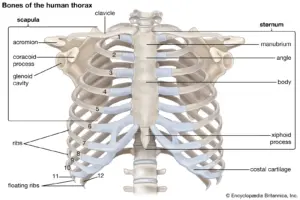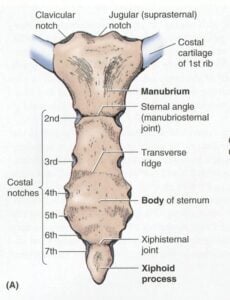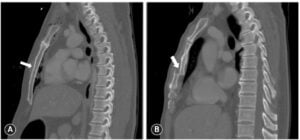Special teams players are usually not mentioned unless they do something remarkably good or unbelievably unfortunate. Or if they get injured. Following his first snap during the second preseason game, Steelers long snapper Christian Kuntz sustained a chest injury, ending his night. The question was whether it would end his season. Kuntz was clearly in pain leaving the field. He was evaluated in the blue tent and ruled out to return, heading to the locker room.
A former linebacker, Kuntz has never hesitated to make a tackle when needed. He sustained an ankle injury covering a punt return in 2023 but finished the game. Although he was seen in a boot afterwards, he never missed any playing time.
Here is the play where Kuntz was injured:
Our own Dave Bryan picked up on the possibility that the injury may have been friendly fire. While the impact with the ground could have been traumatic on its own, there may have been contact between Cole Holcomb’s foot and Kuntz’s chest.
This screenshot shows it as well:

DL Logan Lee filled in admirably as the emergency replacement during the game. Following the game, head coach Mike Tomlin said the team got “good news” on Kuntz. Several injury updates were revealed throughout Monday. That morning, Mark Kaboly reported that Kuntz suffered a broken sternum that would keep him out for weeks to months. Later in the day, head coach Mike Tomlin announced that it was more likely a short-term injury. Kuntz himself was seen in the locker room looking well:
The Steelers have already brought in multiple long snappers for tryout and signed a replacement on Monday. But there is still a chance that Kuntz could be back for the season opener.
(Disclaimer: I have not personally reviewed any medical records, and all opinions are based on game film and reporting from reliable sources.)
As always, let’s start with the anatomy. The chest cavity is formed by a bony skeleton made by the spine posteriorly, the ribs that encircle the lateral and anterior thoracic cavity, and the manubrium and sternum anteriorly.

https://www.britannica.com/science/sternum
As described by the Cleveland Clinic:
Your sternum anatomy consists of three bony parts. These parts include:
- Manubrium: The manubrium of the sternum is the wide, handle-like top portion of the bone. This is where your collarbone and first set of ribs attach. The bottom edge of the manubrium borders the body of your sternum, which is where your second set of ribs attach.
- Body: The body of the sternum is in the center. It’s flat, narrow and the longest part of your sternum. Your third, fourth, fifth, sixth and seventh set of ribs attach to your sternum along the body.
- Xiphoid process: The xiphoid process is the lowest part of the sternum. This pointed end piece of your sternum is made of mostly cartilage. As you age, it begins to calcify and turn to bone.

https://wp.stu.ca/forensicscience/ribs-sternum/
Injury to the sternum is almost always due to trauma. This includes rapid deceleration, such as a driver in a car accident who strikes the steering wheel with his chest. The other most common mechanism is direct force from falls or contact sports.
Fractures of the sternum are described as nondisplaced, where there is no significant change in alignment, or displaced, where the two edges of the broken bone are no longer aligned. This can be seen on a lateral view chest X-ray:

www.jtraumainj.org
Sternum fractures can be associated with damage to underlying tissues:
- Vascular injury to the heart, aorta, or other arteries or veins
- Cardiac contusion (bruise of the heart muscle)
- Pulmonary contusion (bruise of the lung)
- Pneumothorax (puncture of the lung causing collapse)
- Hemothorax (bleeding into the chest cavity)
A review of all published English medical literature from January 2000 to December 2020 showed that most isolated sternum injuries can be managed non-operatively with rest and pain management. Surgical fixation with metal plates or wires is indicated for significant displacement, instability of the sternum, persistent severe pain, or respiratory distress.
Kuntz would have been evaluated with a chest X-ray during the game, so team doctors probably knew whether the fracture was displaced or not by the time Tomlin spoke to the media following the game. A CT scan of the chest would likely have been done to assess further the extent of the bone injury as well as any underlying soft tissue damage. An EKG is often done to rule out any cardiac damage.
There were no reports that Kuntz was evaluated in a hospital. Based on the reporting that Kuntz was seen in the locker room on Monday, he likely did not sustain any significant internal injuries.
Recovery time varies depending on the severity of injury, ranging from four to six weeks. For isolated non-displaced sternum fractures. Patients who require hospital admission usually need management of associated injuries to the ribs or lungs and subsequently have a longer recovery time. If surgery is required, the recovery time can be up to four months. Patients not requiring inpatient management are typically at the low end of the spectrum for recovery time. Chest pain can persist for several months. There is a risk of re-injury for up to a year for athletes who play contact sports.
We do not know the extent of Christian Kuntz’s injury. But given that he was probably not hospitalized and was present in the locker room when the media was present two days after the injury, he likely has a non-displaced sternum fracture without any significant injury to his heart or lungs. If that is the case, Kuntz could avoid IR and miss very little playing time.


